You’ve probably seen it in desserts and cake recipes, but what is buttermilk?
Is it just sour milk? Or is it something else altogether?

Buttermilk is, as the name suggests, milk (liquid) leftover from the butter-making process.
And it’s used in so many incredible ways! For example, did you know it’s what makes fried chicken so juicy and tender?
It’s also an essential ingredient in baking cakes, muffins, pancakes, biscuits, and more.
So, let’s take a look at all things buttermilk, including what it is, how it’s made, and what you can do with it.
What Is Buttermilk?
Buttermilk is a fermented dairy product, similar to kefir.
It’s commonly used in cooking and baking and has a tangy taste, and a thick, creamy texture.
Due to its slight acidity, it’s ideal for tenderizing meats in marinades. But it also tenderizes proteins in baked goods, leaving them extra moist.
Initially, people made buttermilk by churning milk into butter.
When the butter was ready, there was always some liquid left in the churn. After a few hours, it turned into a highly nutritious cream.
Today, buttermilk is made by adding live cultures to regular milk.
It’s thicker than regular milk and has a lumpier consistency. It also tastes distinctly different and somewhat sour – i.e., you don’t usually drink it on its own.
But in cooking, it’s a game-changer!
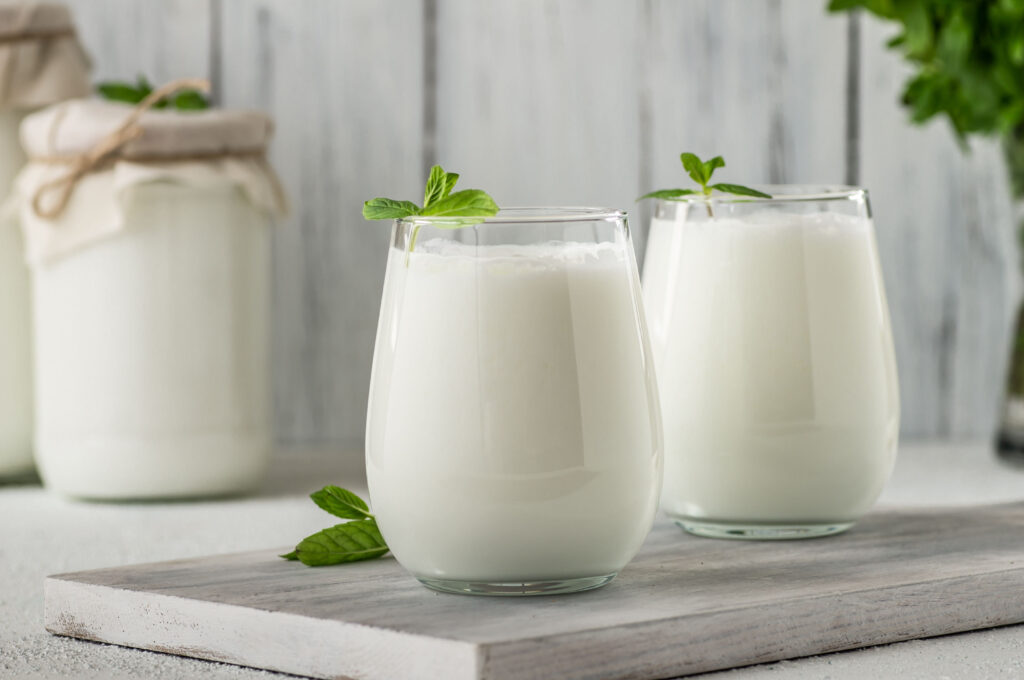
Cultured vs. Churned Buttermilk (What’s the Difference?)
I’ve already discussed the two ways of making buttermilk: churning it or adding cultures to it.
But beyond how each is made, are there other differences between churned and cultured buttermilk?
Yes, actually.
Fat Content
Churned (traditional) buttermilk is a by-product of churning butter and is naturally fat-free.
That’s because the fat made its way into the butter, leaving the liquid without.
Cultured buttermilk – also known as store-bought – is not always fat-free.
It can be; it can also be low-fat or full-fat. It all depends on how the manufacturer made it.
Consistency
Cultured buttermilk is thicker and more acidic than homemade (churned) buttermilk. That makes it richer, tangier, and better for baking.
Homemade buttermilk often has a chunkier texture. That’s because some of the butter gets left behind, leaving solids in the milk.
What Does Buttermilk Taste Like?
Buttermilk tastes tangy and a little sour – almost like unsweetened yogurt.
It has a bracing, acidic flavor that’s definitely an acquired taste. But it also has rich butter notes that are similar to kefir.
Churned buttermilk is usually sweeter than cultured.
When speaking of traditional buttermilk, it’s also important to point out that there are two types.
- Sour cream buttermilk – made with fermented/ripened cream and has a tart, acidic, and sour flavor.
- Sweet cream buttermilk – made with fresh cream and has a more mellow and sweet taste.
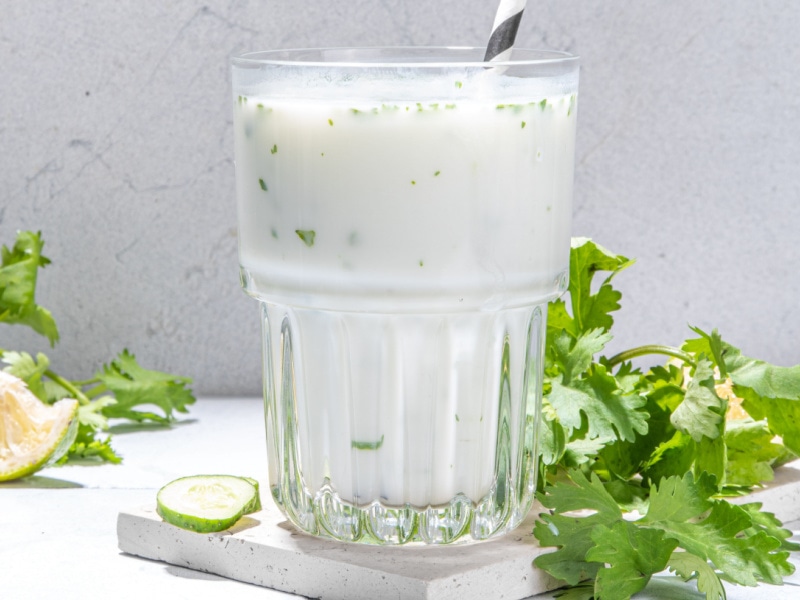
Buttermilk Uses
The first (and easiest) thing you can do with buttermilk is to drink it. Though I don’t recommend it.
Instead, it’s best used in cooking and baking. Here’s why:
- It makes an extra tender cake – the acidity in buttermilk breaks down the gluten found in flour, leaving your cakes and bakes extra soft.
- For an airy sponge – the acidity also reacts with leavening agents (baking powder or soda), creating extra carbon dioxide (bubbles), which makes the sponge light and airy.
- It adds moisture – like any dairy/fat addition, such as sour cream or Greek yogurt, buttermilk adds moisture to your bakes.
- The flavor brings balance – even though it’s quite tangy, it works well with sweet ingredients to make your cakes perfectly balanced rather than cloyingly sweet.
- It makes baked golden brown – using buttermilk helps baked goods form a golden color that’s even.
- Buttermilk has a long shelf life – at least, it’s longer than regular milk. Plus, the added lactic acid acts as a natural preservative, meaning your cakes will stay fresh for longer.
So really, there’s no reason not to add buttermilk to your grocery list!
I use it in all kinds of ways. Such as:
- Ice cream
- Biscuits
- Brownies
- Pies
- Fudge
- Mashed potatoes
- Bread
- Cornbread
- Ranch dressing
- Coleslaw
- Pancakes
- Muffins
- Cookies
For a longer list of ways to use buttermilk in cooking, check out my article 32 Best Buttermilk Recipes.

How to Make Buttermilk
There are a few different ways to make buttermilk (or at least a passable substitute) at home.
And no, they don’t all require investing in a churn and a dairy cow!
1. Whole Milk and White Vinegar
To make buttermilk using white vinegar, add one tablespoon of white vinegar to a 1 cup measuring cup, then fill it with whole milk.
Give it a gentle stir, then leave it to curdle for about 10 minutes.
You can then use the substitute at a one-to-one ratio for buttermilk in any recipe.
2. Whole Milk and Lemon Juice
This method is the same as the one above. However, you’ll use lemon juice instead of white vinegar.
Follow the same instructions, just add the lemon juice first.
Add one tablespoon of lemon juice to a 1 cup measuring cup, then fill it with whole milk.
Stir, and let it sit for 5 to 10 minutes before using it as a 1:1 alternative.
3. Whole Milk and Cream of Tartar
This method is slightly different.
Mix 1 3/4 teaspoons of cream of tartar into 1 cup of whole milk. Stir, then let the mixture sit for about 5 minutes.
It will have the same effect as lemon juice or vinegar. Once it curdles the milk, you can use it in your recipe as a one-to-one substitute.
4. Add Cultures to Milk
If you have a few days before you need buttermilk, you can add active cultures to milk.
Buy packets of buttermilk culture online, at certain grocery stores, or at dairy farms. Then make a batch as instructed.
Like sourdough, it needs to be fed once per week, so this method is only ideal for anyone who’ll use buttermilk regularly.
Once you have that:
- Add 1/4-1/2 cup active buttermilk culture to one quart of warm, regular milk.
- Put a lid on and shake it vigorously.
- Then, place a coffee filter over the top of the jar and screw on a screw band (without the lid).
- Set it aside somewhere warm but not in direct sunlight.
- By the next day, you should have cultured buttermilk!
5. Make More Buttermilk From a Little Buttermilk
If you’re running low on buttermilk and need more, you’re in luck. You can add 1/3 cup of store-bought buttermilk to a cup of milk.
Again, cover it with a coffee filter and screw band, and set it aside. In about 24 hours, the milk will become buttermilk.
You can refrigerate it or use it immediately.

How to Store Buttermilk
Storing buttermilk is simple – whether it’s homemade or store-bought.
Store buttermilk in an airtight container in the fridge for up to two weeks. Though if it’s fermented, it’ll last longer.
Also, remember to shake it in the jug before pouring it into a glass or measuring cup. The longer buttermilk sits unused, the more likely it is to separate.
You can also freeze buttermilk, though you’ll need to remove it from its original container.
Transfer it to ice trays or freezer-safe containers, and use it within 3 months.
Let it thaw in the fridge overnight, then use as normal.


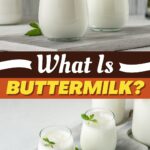

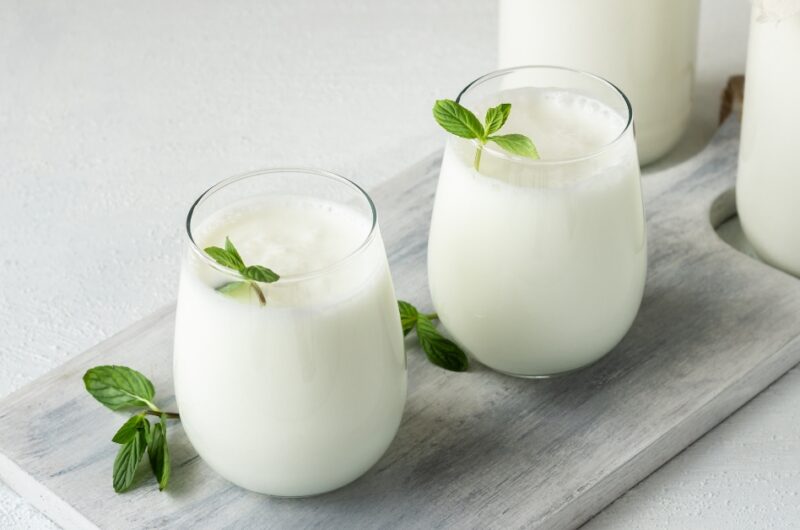




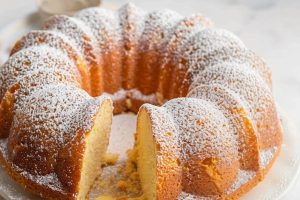

Good, but seems confusing with baking issues.
Can buttermilk be referred to as heavy cream?
Hi Angela, buttermilk and heavy cream are definitely two distinct things with different uses, so you can’t use them interchangeably.